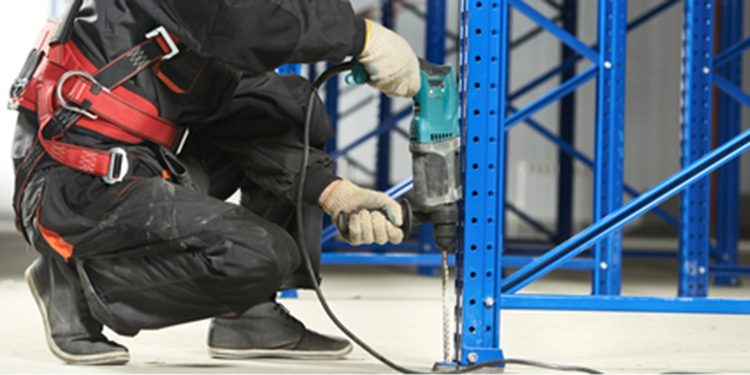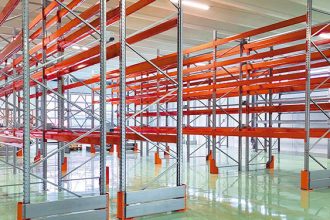Why Are Racks Anchored To The Floor?

All pallet rack columns should be anchored, or secured, to the floor with bolts, according to RMI’s ANSI MH16.1-2012: Specification for the Design, Testing and Utilization of Industrial Steel Storage Racks, section 1.4.7, “Column Base Plates and Anchors.” This includes both aisle columns and interior or rear columns on all frames. The specification requires all columns to be furnished with a base plate (also sometimes called a foot plate) and anchor bolts that meet the design standards established in the same specification’s section 7.3, “Anchor Bolts.”
The reason, quite simply, is so the racks don’t fall down. The base plate and the anchors are designed and engineered to resist forces experienced at the base of a columns—such as seismic forces caused by an earthquake, or impact forces caused by a forklift collision—keeping them in an upright position and ensuring the safety of any persons in the area.
Each rack manufacturer will configure a column base plate that best protects a unique rack installation. Sizes can range from as small as 3 x 5 x 0.25 inches with a single anchor, up to 12 x 12 x 0.5 inches for tall systems in seismic zones. The rack manufacturer or professional engineer will provide details about the proper quantity, brand and size of the anchor bolts needed, as well as how many holes within the base plate are to be used (most base plates are provided with extra holes for use as alternatives if floor reinforcing interferes with drilling the floor). Special care must be taken when anchoring near slab expansion joints and when replacing damaged anchors to ensure that the installation conforms to the supervising engineer’s directions.
Looking for more details about anchoring? Additional information can be found in RMI’s Frequently Asked Questions website page.


